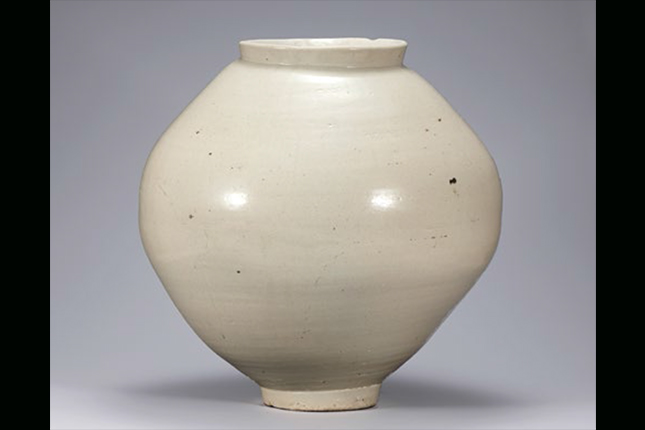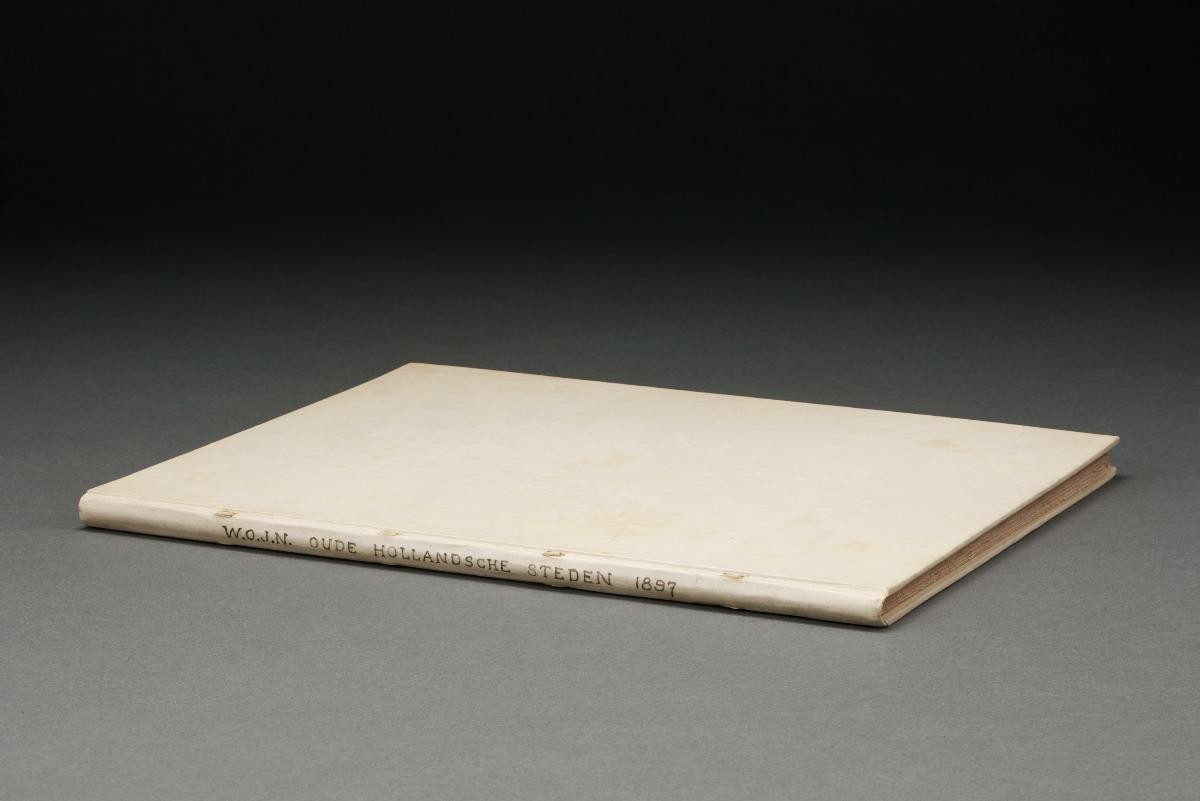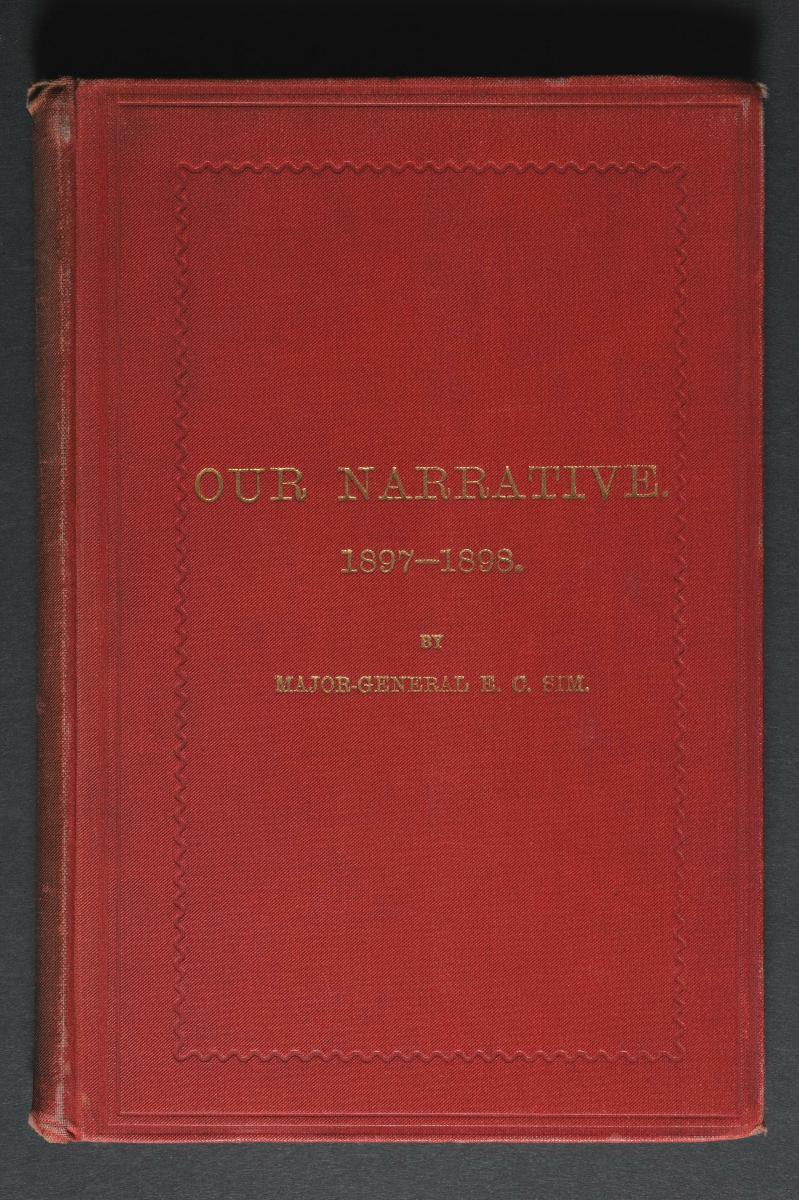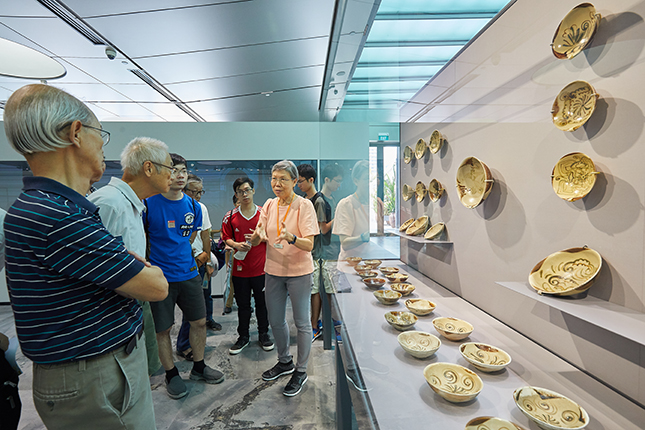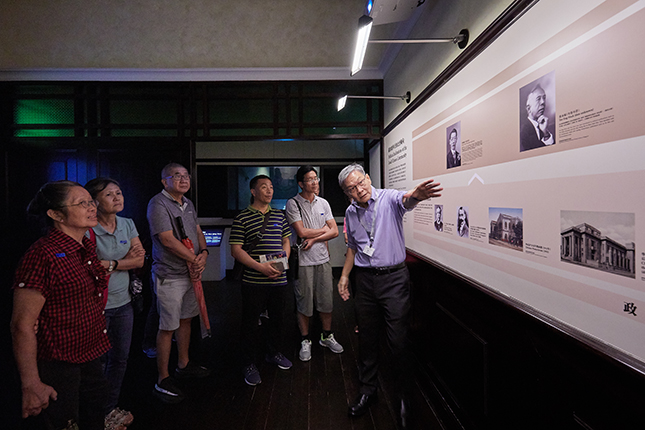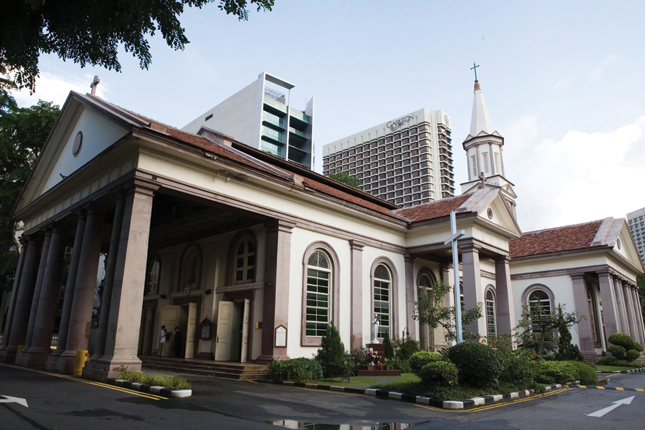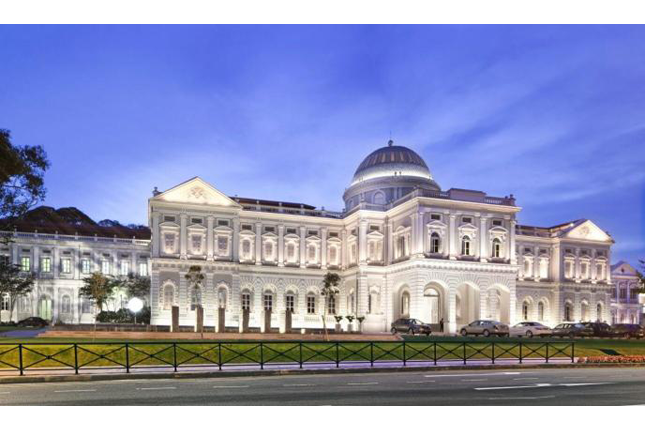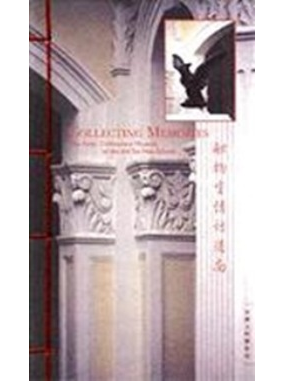Text by Kan Shuyi
Images courtesy of National Museum of Korea, Seoul and the National Palace Museum of Korea, Seoul
MuseSG Volume 10 Issue 1 - Jun 2017
The tree with deep roots does not tremble in winds; its flowers are perfect, its fruit abundant. Waters rising from deep sources do not end in drought; forming a river, they flow on to the sea.
- Yongbi eochonga (Songs of the Dragons Flying to Heaven)1
Like a tree with deep roots, the Joseon dynasty which spanned more than 500 years is one of the longest-ruling dynasties in the world. Founded in 1392 by the military general Yi Seonggye (1335 to 1408), the new dynastic name Joseon was based on that of Korea’s first kingdom, called Gojoseon. Apart from referencing Korea’s legendary past, the name also signalled Yi’s desire for new beginnings, for Joseon means “Fresh Dawn” or “New Dynasty”.
General Yi, also known as King Taejo (reigned from 1392 to 1398), broke with the past by moving the capital from Gaegyeong (present-day Gaesong, North Korea) to a new site – Hanyang (present-day Seoul). More importantly, he supplanted Buddhism with Neo-Confucianism as the kingdom’s state ideology. King Taejo as well as his successors sought to curtail the power and excesses of the Buddhist establishment, which had become saddled with corruption.
This elevated status of Neo-Confucianism distinguished the Joseon period from preceding dynasties by greatly shaping political and socio-cultural life, as well as much of the arts produced during the era. For instance, the Confucian emphasis on modesty can be discerned from Joseon porcelain which were often simple yet elegantly designed (fig. 1).
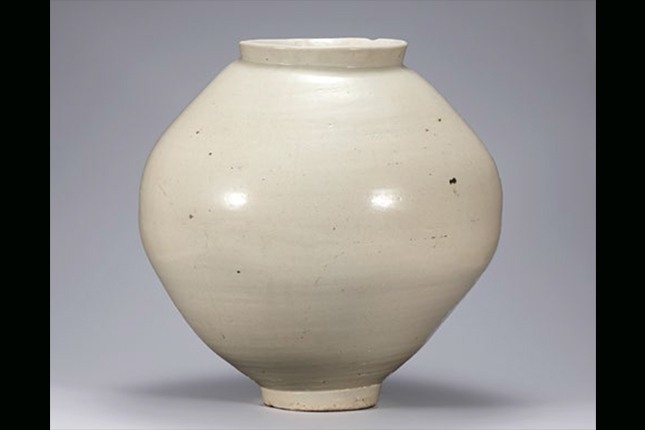
Collection of National Museum of Korea.
This Joseon adoption of Neo-Confucianism underscores the powerful influence which China traditionally had on Korea. The geographical location of Korea, lying between China and Japan, fostered much cultural and economic interaction as well as conflicts among these three countries. The devastation wrought on the Joseon kingdom by the Japanese invasions in the late 16th century as well as by the Manchu invasions in the early 17th century was a turning point in Korean history.
Despite these upheavals, Joseon Korea experienced many artistic and scientific advances, especially under the leadership of several strong Joseon kings. Most of these important developments occurred during the 15th and 18th centuries, which are regarded as the two golden ages of the Joseon period. The fourth monarch, King Sejong (reigned from 1418 to 1450), is often regarded as the most outstanding among the Joseon kings. In addition to his social reforms, he sponsored many scientific and cultural projects. He is especially renowned for implementing a new phonetic alphabet in 1446. Initially called Hunmin Jeongeum (Korean for “correct sounds to instruct the people”) and better known today as Hangeul, the alphabet project stemmed from King Sejong’s desire to provide his people with a written means of expression that could be learned and used with greater ease, instead of the complicated Chinese system.
The King And His Court
As the head of a Confucian state, a Joseon king was expected to possess excellent moral fibre, wisdom and erudition. From a young age, Joseon princes were subjected to a rigorous education in the Confucian classics and history in a bid to become sage-kings. This was especially important as a king’s moral stature was thought to affect the stability and success of his rule. This belief was undergirded by the Confucian concept of the Mandate of Heaven, which General Yi invoked to establish the legitimacy of the new Joseon dynasty and his right to rule.
The Confucian emphasis on ritual propriety saw many ceremonies being conducted at the Joseon court. These were collectively referred to as the Five Rites of State and formally instituted in 1474. The Five Rites consisted of auspicious rites (gillye) which included memorial services to past Joseon kings and queens, celebratory rites (garye) which were performed on joyous occasions such as weddings, reception rites (billye) to welcome foreign dignitaries, military rites (gullye), and last but not least, inauspicious rites (hyungnye) that pertained to mourning and funerals. These events allowed the monarchy to project its authority over officials, foreign envoys and the masses, while promoting harmony among the people.
In addition to participating in many of these rites as a representative of the Joseon people, the kings also wielded objects to signify their status and supremacy. Many of these objects such as the Sun, Moon and Five Peaks screens, royal seals, and items of clothing have become key icons of the Joseon period. The vividly-coloured screens depicting the Sun, Moon and Five Peaks (fig. 2) were seen to embody the universe and its cosmic forces. Set behind the royal throne or a king’s royal portrait, these screens were associated with kingly power and signified the monarch’s presence even when he was physically absent.
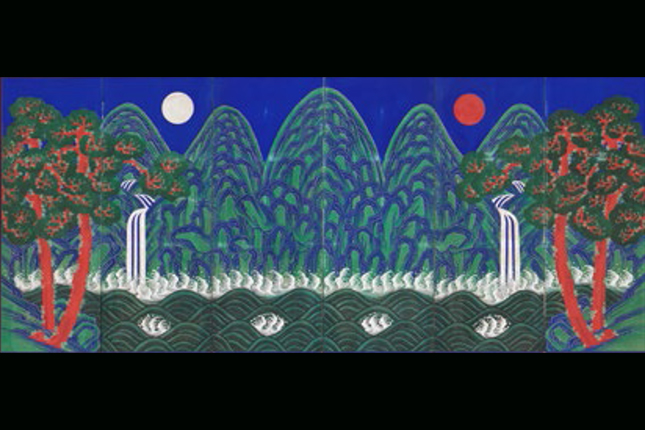
Collection of National Palace Museum of Korea, Seoul.
Such screen paintings were among the many fine objects sponsored by the king and his court. While some of the iconography were originally restricted for royal use only, certain motifs such as those with auspicious meanings became popular and were used by other members of society during the late Joseon period. For instance, folding screens which depicted books arranged on shelves called chaekgado (fig. 3) are believed to have first appeared at the Joseon court in the late 18th century at the behest of King Jeongjo (reigned from 1776 to 1800), who was known for his great love of books and scholarship. Such screens featuring books, which were sometimes portrayed with scholarly paraphernalia and other valued possessions, were subsequently embraced by scholar-officials as well as the middle classes. The types and designs of other courtly objects such as porcelains and dress ornaments also shaped tastes and trends beyond the palace walls.
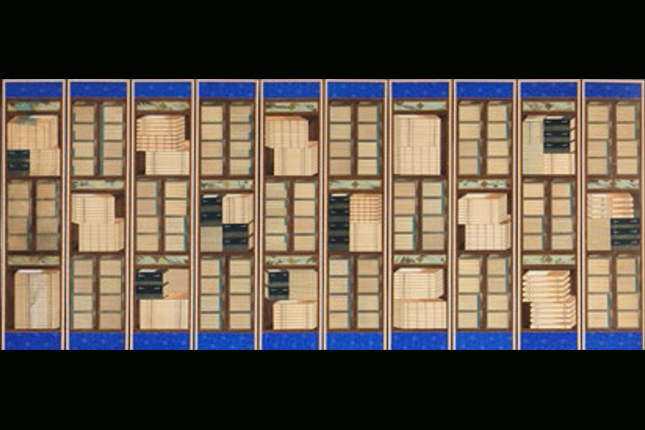
Collection of National Palace Museum of Korea, Seoul.
The Yangban and Aristocratic Life
Another key group that contributed much to the artistic legacy of the Joseon dynasty were the yangban. They formed the highest social class and constituted the kingdom’s intellectual and cultural leaders. The yangban comprised the two orders of civil and military officials serving in the government, as well as their families. The yangban also referred to members of select lineage groups with distinguished ancestors such as prominent scholar-officials. In fact, from the mid-17th century onwards, many yangban no longer worked for the government but resided in the countryside away from the main administrative centres.
Whether they were rich or poor, part of the government bureaucracy or not, the yangban were regarded as the moral pillar of Joseon society. As such, they were expected to devote themselves to the Confucian doctrine of self-cultivation and study. In addition to their pursuit of scholarship, the yangban also devoted much of their energies to calligraphy, painting, music and literature. Many yangban were highly accomplished in the arts of the brush, such as Kang Huian (1417 to 1464) and Kim Jeonghui (1786 to 1856), who were known for their adroitness in painting and calligraphy respectively (figs. 4 and 5).
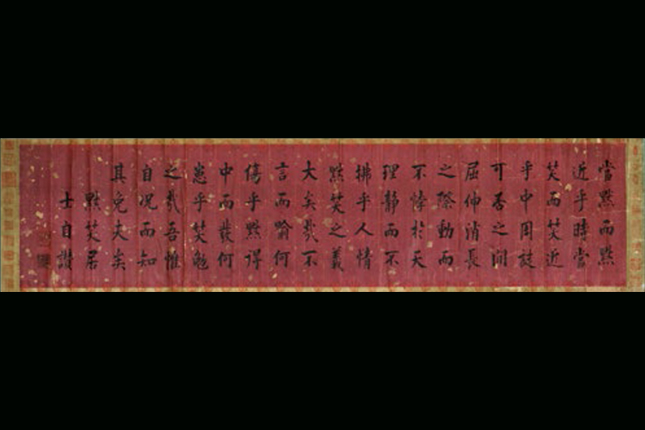
Collection of National Museum of Korea, Seoul.
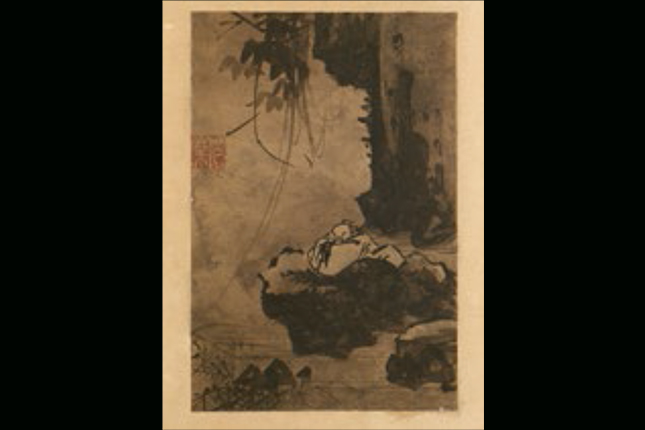
Collection of National Museum of Korea, Seoul.
The adherence to Confucian ideals and its hierarchical values was also translated into the living spaces of the yangban. The emphasis on the dichotomy between genders shaped the spatial arrangement of yangban households, while influencing the type and style of furnishings used in the respective spaces. For instance, the living quarters of both genders were separated, with the men’s quarters (sarangchae) located in the eastern section of the residence, and the women’s quarters (anchae) to the west. This corresponded with the traditional notion that the east symbolised yang or masculine energy, while the west represented yin or feminine energy.
Moreover, furniture used in the sarangchae and more specifically, the sarangbang (master’s room which also served as a study, bedroom and reception hall) were often designed with a minimalist aesthetic (fig. 6). Clean lines and a lack of ornamentation characterised the wooden furniture used in the men’s quarters.
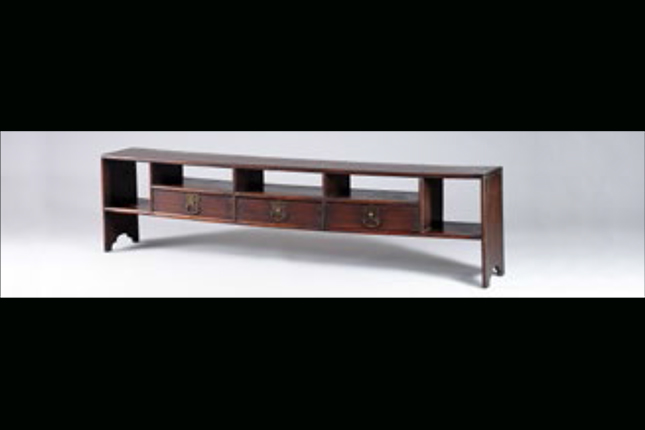
Collection of National Museum of Korea, Seoul.
On the other hand, the furniture and implements used by the women in the inner quarters were more colourful and elaborately designed (fig. 7).
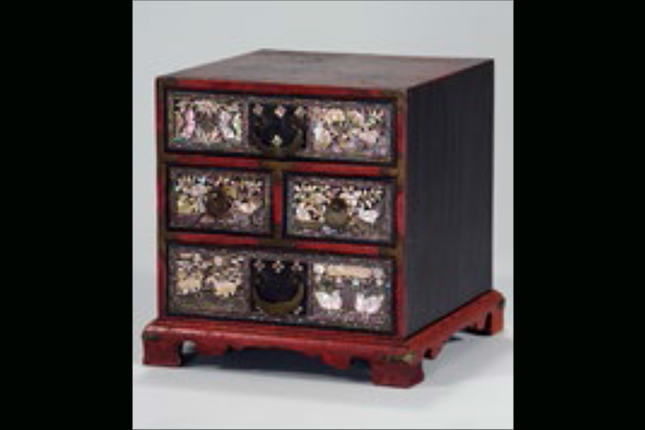
Collection of National Museum of Korea, Seoul.
Everyday Life Of The Joseon People
While the Joseon landscape was shaped largely by the tastes and patronage of the royal and aristocratic elite, it was also enriched by the vibrant arts cultural and crafts produced for the wider populace.
By the early 16th century, the Joseon kingdom’s population had exceeded ten million, nearly doubling the size it had been at the start of the dynastic period. The growth was spurred by improvements in agricultural technology which increased productivity. The capital Hanyang was not only the centre of political life but a major commercial city drawing people from all walks of life and from around the country. The Joseon population was divided into four classes. After the yangban, who enjoyed the highest social status, came the jungin. This referred to people who possessed technical skills or professional knowledge, such as doctors, astronomers and interpreters. Below them were the sangmin or commoners – farmers, artisans, and merchants, who formed the largest segment of the population. At the lowest social stratum were the low-born (cheonin), which included butchers, musicians and courtesans.
The daily lives of all classes became the subject of genre paintings, a major form of Korean art that flourished in the 18th century (fig. 8). The paintings focused on candid depictions of commoners at work and at leisure. The trend was spurred by the growing interest among intellectuals in Korea’s native customs and crafts, as well as its agriculture and geography. This developed under the banner of Silhak (Korean for “Practical Learning”) – a popular movement during the late 17th and 18th century which advocated a practical approach to statecraft.
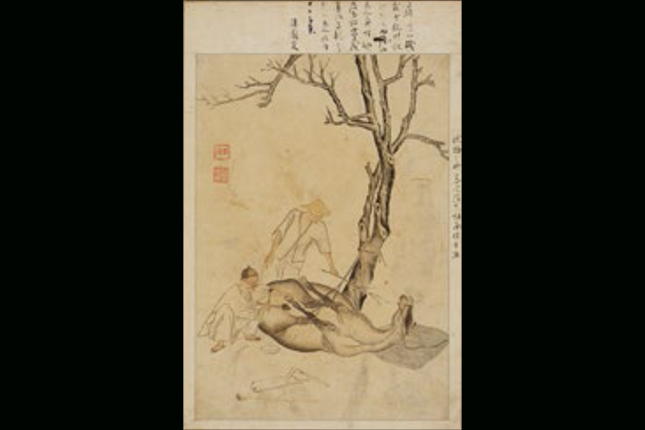
Collection of National Museum of Korea, Seoul. Bequest of Lee Hong-kun.
Joseon Legacies
While Joseon regarded China as the bastion of civilisation in East Asia, and much of its art and culture took reference from its continental neighbour, the kingdom also adapted other foreign influences, and developed its own distinct style and identity. For example, not only were traditional Chinese painting themes reinterpreted by Joseon artists, the 18th century also saw the flourishing of true-view landscape painting that emphasised actual native scenery. Prior to this new movement, Joseon painters tended to portray idealised landscapes drawn from Chinese cultural references or generic images of nature.
Despite the political and economic strife of the 19th century, many of the socio-cultural changes introduced by the Joseon dynasty have enjoyed an enduring legacy. Much of what is considered traditional, as well as the social customs and beliefs that are a prominent part of life in South Korea today, emerged during the Joseon era. Examples include the emphasis on filial piety, as well as respect for seniority and age – both of which characterise social relations in contemporary South Korea. Much of Korea’s rich cultural heritage, including its cuisine, architecture, performing, visual and literary arts, and even alphabet – were created during the Joseon dynasty.
1 Written in the mid-15th century, Yongbi eocheonga is the first literary work written in Hangeul. The text praises the virtues and heroic deeds of the first and third king of the Joseon dynasty as well as their ancestors. This particular stanza likens the new dynasty to a tree with deep roots and a spring of deep waters, and predicts its longevity The translation of this poem is from David R. McCann, Early Korean Literature: Selections and Introductions (New York: Columbia University Press, 2000), 125.




